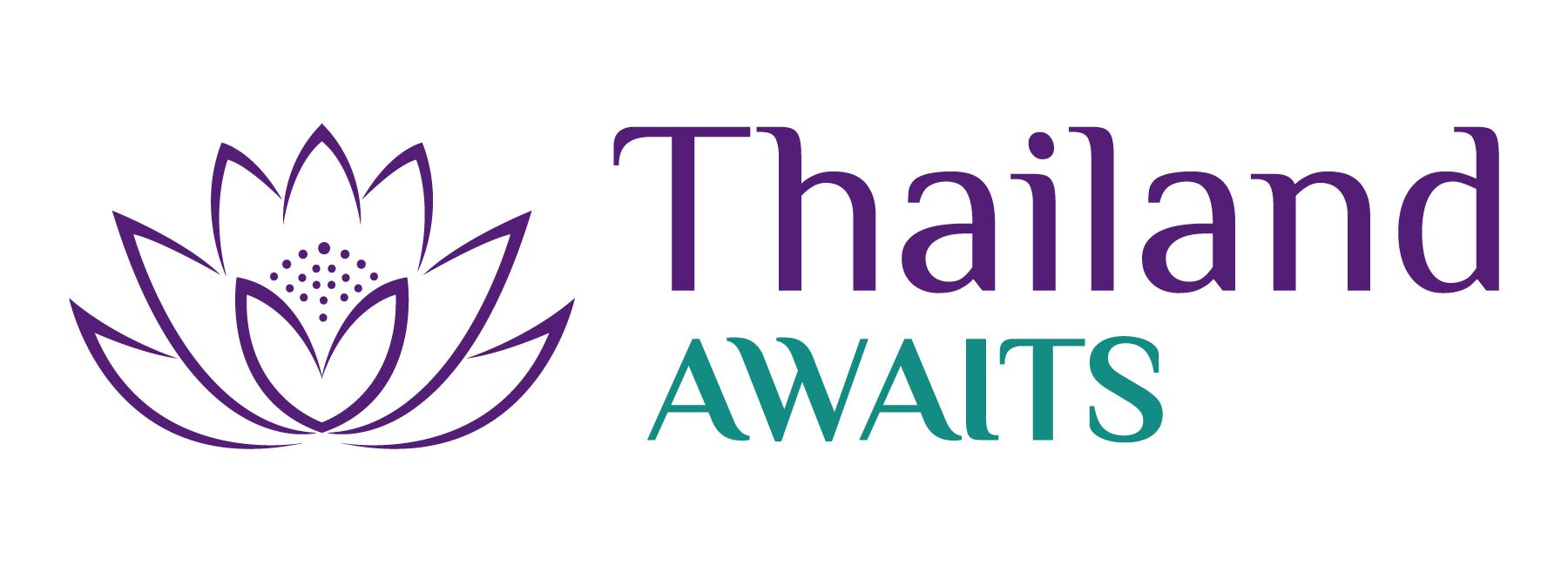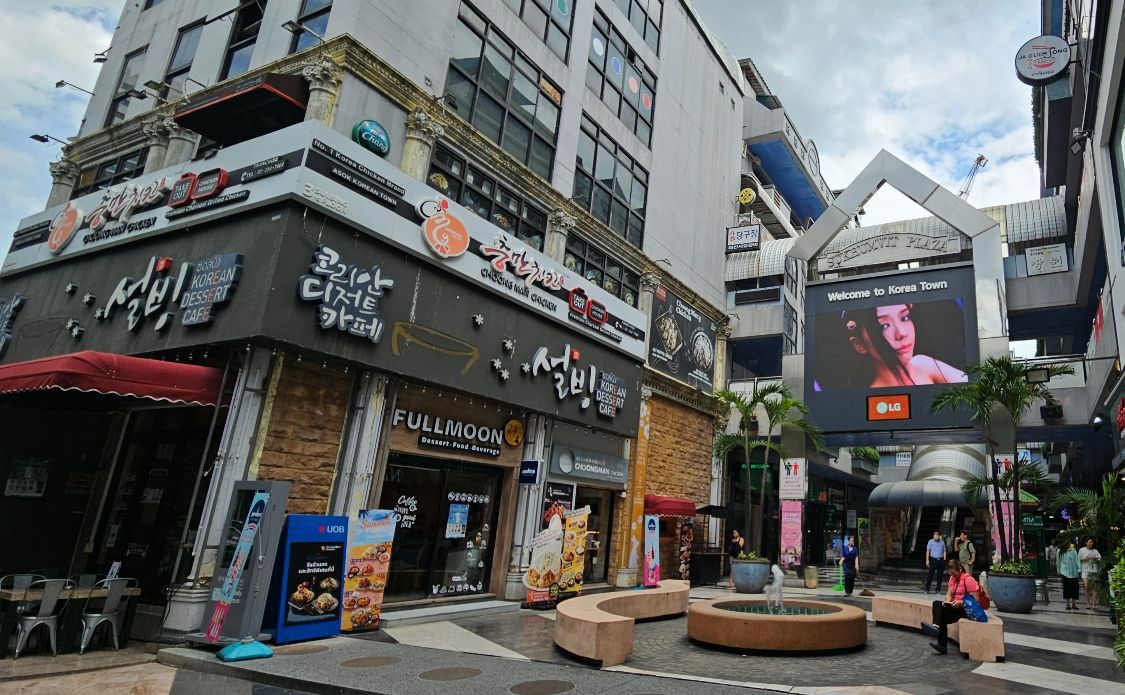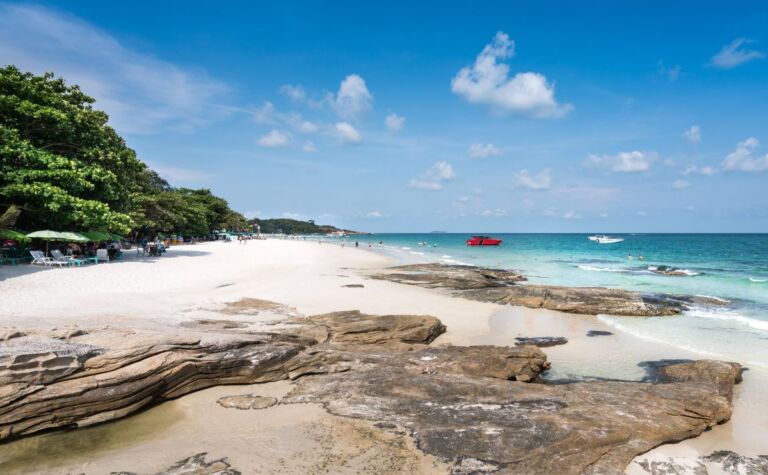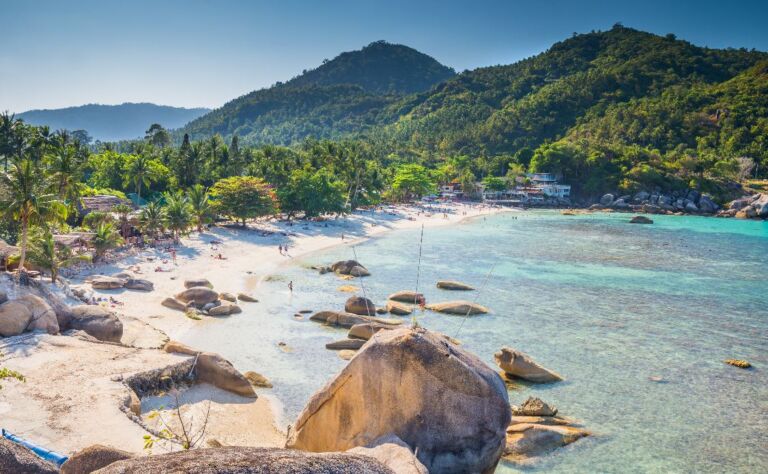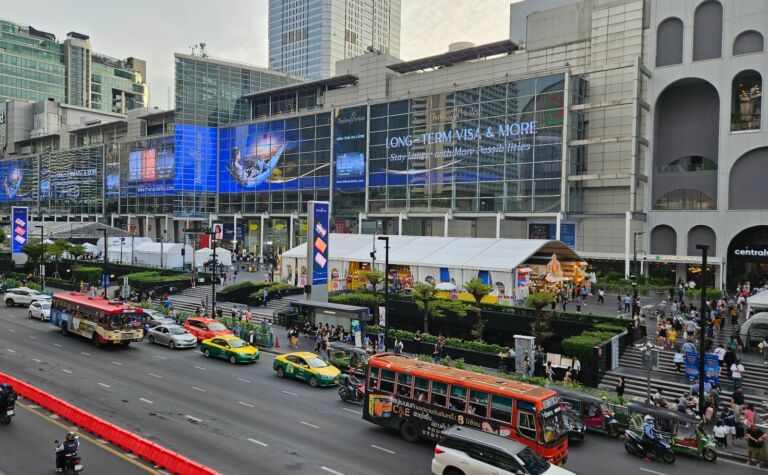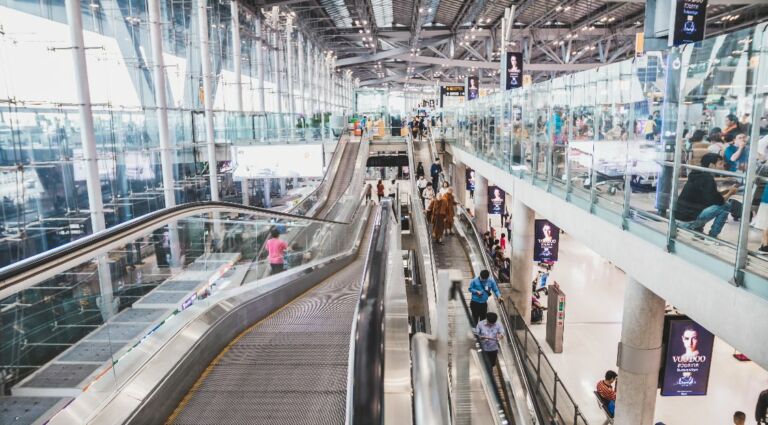Exploring Bangkok’s ethnic Neighbourhoods: Finding food from home!
Enjoy a culinary and cultural journey around Bangkok with our detailed guide to Bangkok’s ethnic neighbourhoods. These multicultural ‘Little’ areas including Little India and Little Arabia, Koreantown and an entire suburb with a Japanese flavour, offer tantalising street food and unique shopping experiences. Writer and long time Bangkok local Stephen Christopher has created a comprehensive guide to must-visit sites and must-try foods.
This page contains affiliate links. Please see our disclosure policy for more details.
Bangkok is a melting pot of cultures. Many people from abroad have settled in the city and brought some of the best parts of their cultures with them. The result of this is that a number of ‘little’ areas have been established, keeping all of these snippets of culture in one place.
I love visiting these places; it’s an opportunity to immerse myself in another culture within Thailand. If you can’t get to India, the Middle East, Japan, or Korea this year, but you’re coming to Bangkok, you’ll get the chance to experience a taste of each.
Here are those four ‘little’ areas. I’ve covered a bit about each one, the highlights of each place, and, of course, where to eat. I’ll also cover the shopping in each area and provide a brief guide for transport to each one.
Let’s go exploring!
Little India
This area is the one I visit most when I’m in Bangkok. I used to make a weekly pilgrimage there when I lived in the neighbouring province of Nonthaburi. I’m now over three hours away, but I’m already planning my next visit.
Little India, also known as Pahurat, is a bustling hub of Indian culture. Its stores sell colourful textiles and aromatic spices, and there is an array of Indian restaurants and sweet shops.
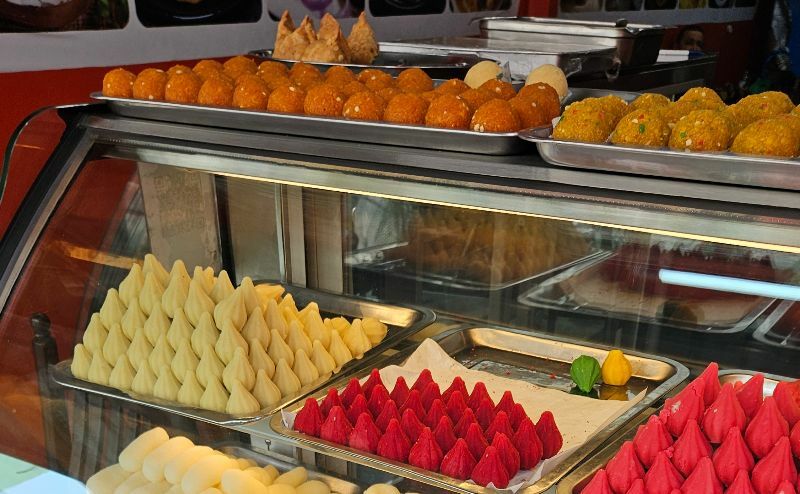
What I love about it is that it’s really easy to get to, and even though I’ve never been to the real India, it gives me a sense of what it might be like there. Oh, and I love the food.
What to See in Little India
Little India is mostly about shopping and eating. However, there is one site worth visiting: the Sri Guru Singh Sabha Temple, the largest Sikh temple in Bangkok.

It was built in 1932 and is the second largest of its kind outside India. From the busy street, you could also walk by it without noticing, but its golden-domed structure peaks above the shopfronts, hinting at what lies behind the nondescript entry. It is devoted to the worship of the sacred scripture Guru Granth Sahib, a 17th-century Sikh holy book.
Where and What to Eat in Little India
Ok, so this is the main reason I go to Little India. Indian food is everywhere in my home city of Sydney, Australia, and I grew up eating butter chicken and aloo matar (potatoes and peas). My Thai husband was raised by his Muslim grandparents and ate Indian food every Friday.
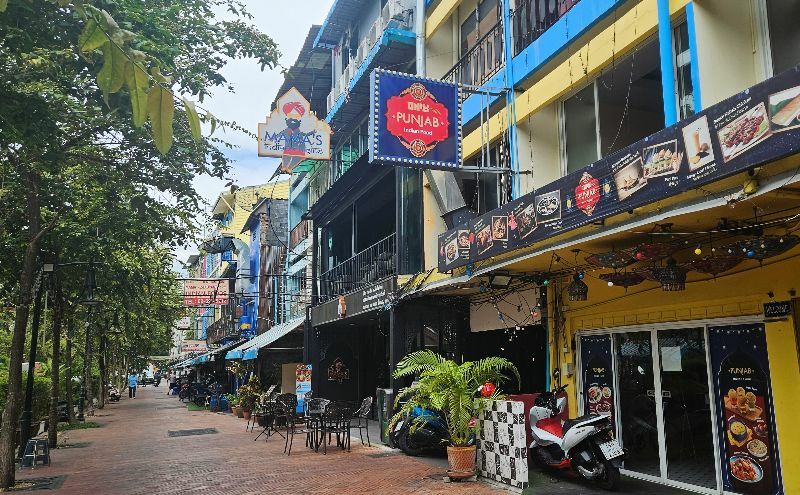
We both love the traditional food in Little India. Our favourite place, Royal Rasoi, is tucked away in a little soi. This soi is a row of Buddha shops, with the odd food place breaking them up. Even though we’re confirmed carnivores, we love the vegetarian menu at this restaurant.
Must-try foods include Samosas, a fried or baked pastry with savoury filling, and Biryani, a mixed rice dish with its origins among the Muslims of the Indian subcontinent. I recommend you try the various types of Indian bread, like naan and roti, served with a variety of curries. My favourite is garlic naan with butter chicken.
Then, to top it off, choose one (or more) of the sweet delicacies on display in the cabinet at the front of most restaurants.
Where to Shop in Little India
People go to Little India primarily to shop. The area is known for its colourful fabric market, where you can find a variety of textiles from India and other parts of Asia. As mentioned, there are also a number of Buddha shops there.
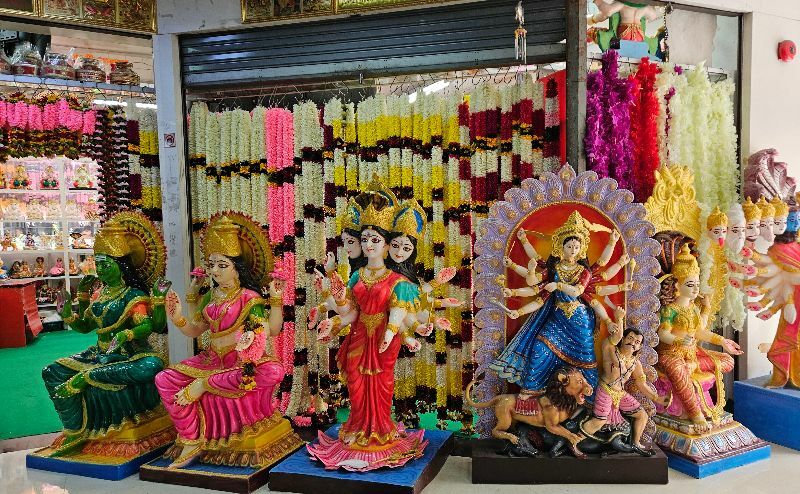
When we had our barber shop, we decorated it with many statues and accessories that we found there. People from India visiting Bangkok who want to do their own cooking will love the mini-marts that sell all their favourite spices.
Head out the back exit, and you will find a market selling all sorts of things, including Muslim food.
How to Get to Little India
Little India is located near Chinatown and is really easy to get to. Get off the MRT at Sam Yot station, cross the road, and walk past the Old Siam Centre. The fabric market starts there. If you’re not a fan of trains, you can reach it by taking a taxi or tuk-tuk from the city centre.
Little Arabia
Another notable ‘Little’ neighbourhood is ‘Little Arabia’, or Soi Arab, located in the Sukhumvit area. This neighbourhood is a gateway to Middle Eastern culture, offering a variety of Arabic, Iranian, and Lebanese restaurants. It’s also known for its shisha bars and Middle Eastern supermarkets.
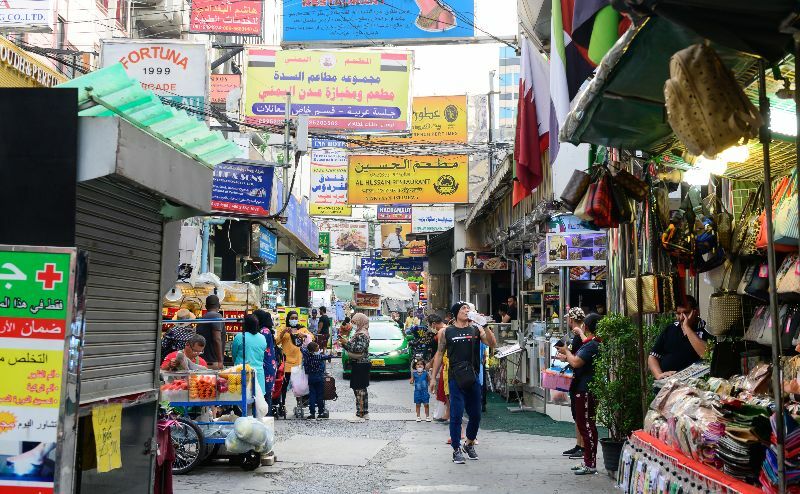
What to See in Little Arabia
In Little Arabia, the must-visit place is Arab Street (Sukhumvit Soi 3/1), which is lined with Middle Eastern restaurants, shisha lounges, and shops selling traditional goods.
Where and What to Eat in Little Arabia
That’s easy — anywhere in Sois 3 to 5! There are so many delicious restaurants that it’s impossible for me to highlight one. My Muslim friends love this street because they can easily get halal food (unlike other areas of Bangkok). I’ve never had a bad meal in Little Arabia.
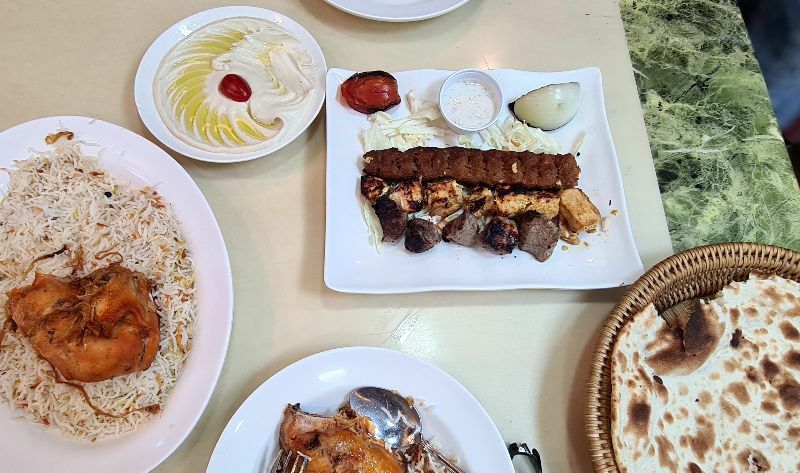
Must-try foods include Shawarma, a Middle Eastern dish consisting of meat cut into thin slices, stacked in a cone-like shape, and roasted on a slowly turning vertical rotisserie or spit. Another popular dish is Falafel, a deep-fried ball or patty made from ground chickpeas, fava beans, or both.
Where to Shop in Little Arabia
There are two shops, Foodlands and Souky, where you can pick up some Middle Eastern cooking supplies, such as labneh, olives, zaatar, and plenty of spices. Sure, I can make my own hummus, but the ingredients and spices here blow my mind. Anyone visiting from the Middle East who loves this cuisine and wants to do their own cooking will benefit the most from these shops.
How to Get to Little Arabia
Like Little India, Little Arabia is super easy to get to. The easiest way is by taking the BTS Skytrain to Nana station. Get out at the Soi 7 exit and walk the two short blocks to Soi 3/1. Sukhumvit Road also has many buses that go down it from the city, as well as taxis and tuk-tuks. However, it’s the main thoroughfare to the south and traffic jams are common.
Tip: If you fancy a Middle Eastern feast and don’t want to make the trip to Little Arabia, there is a range of very good options in the MBK shopping centre.
Little Japan
Did you know that Thailand and Japan have a history that dates back as far as the Ayutthaya period of the 14th Century? Sure, there was a bad period during World War II when things went a bit awry — a trip to Kanchanaburi will fill you in on that history. But mostly, it’s been a positive relationship, and Japanese food, in particular, is available almost everywhere in Thailand.
Bangkok does have a Little Japan, though, and it’s located in the Thonglor area. It’s a haven for Japanese ex-pats and lovers of Japanese culture. It’s filled with izakayas (Japanese pubs), sushi bars, ramen shops, and, of course, karaoke bars.
What to See in Little Japan
Hands down, my favourite thing to do in Little Japan is to spend a couple of hours at a traditional Onsen. A soak in a hot spring is the best thing for tired muscles. Yumoto Spa Private Onsen is in Sukhumvit Soi 31. I love the Himalayan Salt sauna.
Where and What to Eat in Little Japan
In Thonglor Soi 13, you will find several restaurant choices. Whether you’re looking for sushi, ramen, teppanyaki, or anything else you can imagine, you’ll find it here. There is also a Japanese Fresh Wholesale Market next to the once popular but now almost deserted Nihonmura Mall.
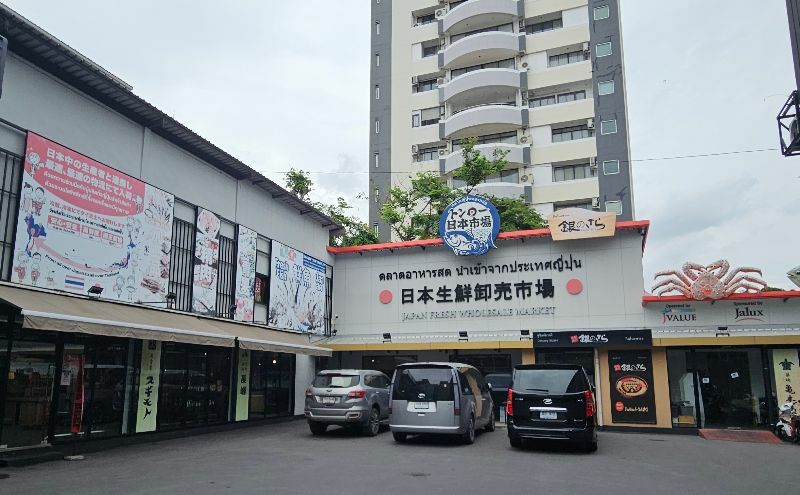
I don’t really need to go into detail about what Japanese food is as almost every traveller I’ve ever met has tasted it somewhere on their travels. If you are looking for ingredients the wholesale market is a great place to start.
Where to Shop in Little Japan
A couple of steps away from the Nihonmura Mall is the Japanese Wholesale Market, well-known for its massive array of fresh fish. It’s my favourite place to buy the freshest possible sushi — the fish is caught only a few hours before it’s served!

Don Don Donki Mall in Sukhumvit Soi 63 is five levels of Japan on acid! If you aren’t able to go to Japan, you’ll easily get your fill at Don Don Donki. The supermarket is epic, and the best part is that it’s open 24/7. Having said that, not every shop is open those hours, like many places in Thailand, shop-owners dictate their own hours, so on public holidays in particular, there won’t be as many stores to visit. I love the Daiso shop, which has loads of quirky Japanese items. You will also find a large golf shop.
How to Get to Little Japan
Little Japan covers quite an area, but the best starting point is the Thong Lor BTS station. From there, you could wander up and down the sois off Sukhumvit Road, or if you know exactly where you’re going, jump in a tuk-tuk.
Donki Mall offers a free shuttle bus that runs between the mall and Ekkamai and Thong Lor BTS Stations.
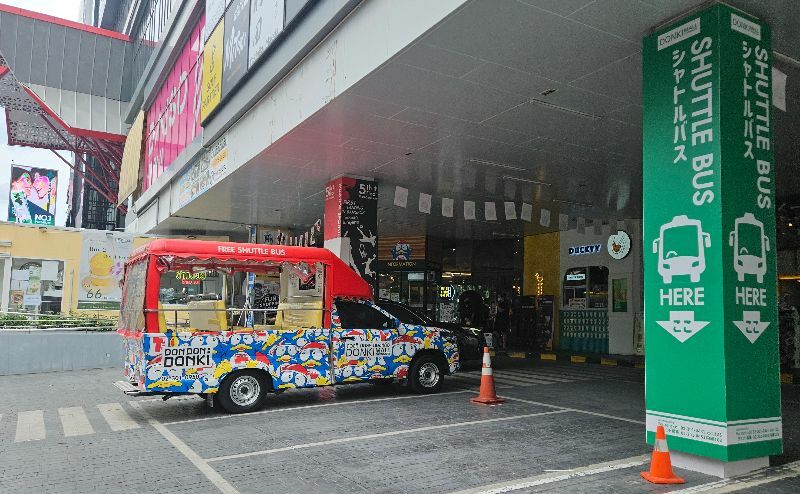
Little Korea
So here’s the thing about Little Korea: there are two! First up, there’s the official ‘Koreatown’ in Sukhumvit, which is actually one shopping mall called Sukhumvit Plaza. It’s on the corner of Sukhumvit Road and Soi 12.
On their last trip to Bangkok, Paula and Charles were wandering around Siam Square (opposite Siam Paragon shopping mall) and couldn’t help noticing the wide array of Korean restaurants and boutiques in Sois 1, 2, and 3. So they’ve named this area the unofficial second Little Korea.
What to See in Little Korea
Right now, the two Little Koreas are about eating and shopping. And there’s plenty of both to be had. I’ve expanded on those below.
Where and What to Eat in Little Korea
Like with Little Arabia, it’s almost impossible to pinpoint the best place to eat. Again, I’ve never had a bad meal at either of the Little Koreas.
Must-try foods include Bibimbap, a rice dish served with sautéed and seasoned vegetables, chilli paste, and soy sauce, and often with a raw or fried egg and sliced meat. Then, of course, there’s Kimchi, a traditional side dish of salted and fermented vegetables, such as napa cabbage and Korean radish.
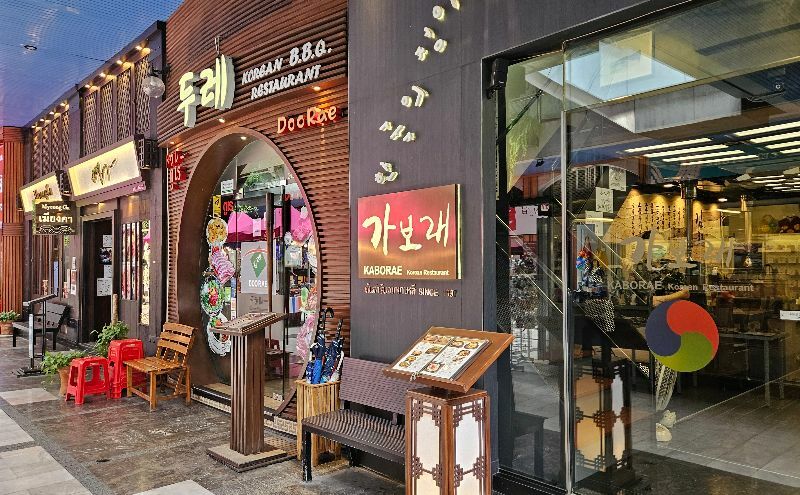
Korean BBQ is all the rage, and the all-you-can-eat restaurants are everywhere. You do have a set time limit, so plan your time wisely, but don’t take more than you’re going to eat. Any leftover food gets ‘fined’ by weight, and I’ve seen some greedy groups get slugged with a hefty ‘wastage’ bill.
Where to Shop in Little Korea
Sukhumvit Plaza is Koreatown, where you can shop. It’s filled with Korean knickknack stores, beauty shops, and a supermarket.
Siam Square Soi 2 has a range of boutiques on the plaza side of the road. These shops are awesome as the clothes are unique and can only be found here.
How to Get to Little Korea
The easiest way to reach the official Koreatown is by BTS. It’s halfway between Nana and Asok stations, so take your pick. Be sure to exit either at the southern exits. Once again, as it’s right on Sukhumvit Road, you could get a bus, taxi, or tuk-tuk, but be prepared for a traffic jam.
Go Little in Big Bangkok
There you are; visitors and expats will love spending time in these little areas.
If you’re after some delicious, fragrant, spicy food or are in the market for fabrics and textiles, head into Little India. For a taste of the Middle East, Little Arabia has you sorted. If getting to Japan isn’t an option, Little Japan in Thonglor is almost as good as the real thing. Korea is the new black right now, so head to both Little Korea locations and get your fill.
The culture, the food and the shopping are the primary reasons to visit, so be sure to add at least one of these to your next trip to Bangkok. I hope to bump into you in one of the ‘little’ areas someday soon.
Ready to start planning your Thailand trip? Our Facebook community Thailand Awaits is here to help. Join fellow travellers, get your questions answered by Thailand experts, and access free planning resources.
